Goose, or in plural geese, are the most popular waterfowl. The bird becomes domesticated and widely used for many purposes. They are also considered pet birds in many societies and myths. Geese are found worldwide and are very useful as friends, guards, and lawnmowers. They are usually bred for their meat and occasionally for specialty eggs for the specialist breeders and keepers of pure breed geese. There are hundreds of types of goose found throughout the world. All geese are not equally important.
Most Common Types of Goose
Goose is waterfowl but differs from ducks in many ways. All Goose types have been selectively bred from the wild Greylag goose (Anser anser) except the Chinese and African, which were bred from the Swan goose (Anser cygnoides). Chinese geese may readily be distinguished from European geese by the large knob at the bill’s base, though hybrids may exhibit every degree of variation. There are currently 15 breeds of geese recognized by the American Poultry Association. Goose breeds are divided into three weight classes, which include: Heavy, Medium, and Light.
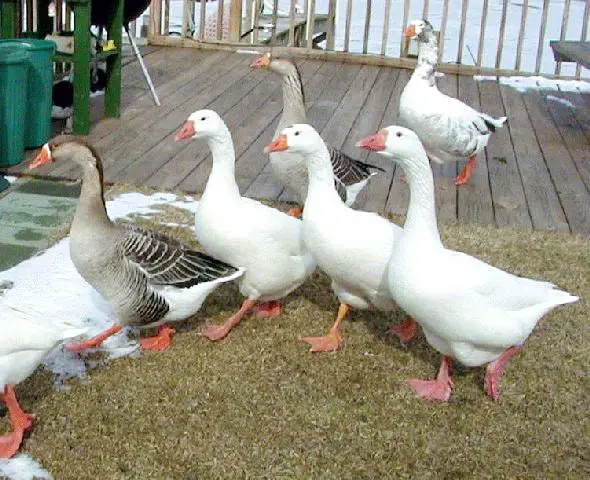
1. Toulouse Goose
The birds originate from the area around Toulouse in Southwest France. It is one of the oldest breeds and commonly used for meat production, especially when crossed with Embden geese. They have a long, broad, and deep body, full, deep, and upright breast, strong and extensive wings, thick and long neck, and slightly short, upward, and spread tail. There are different color varieties, which include Grey, Buff, and White. The body weight varies in gander 11.8 to 13.6 kg and goose 9.1 to 10.9 kg.
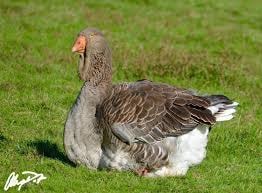
2. Types of Goose: Embden Goose
The Embden goose was originated from Northern Europe, in Germany and Holland. They have a well-rounded bulky body, long back, gracefully curved necks, and a short tail. The head is oval-shaped, and they have a long and graceful neck. The Embden goose is the longest and tallest of all domestic goose breeds, and they are fast-growing, quickly achieve about 9 kg for the Goose and 14 kg for the gander.
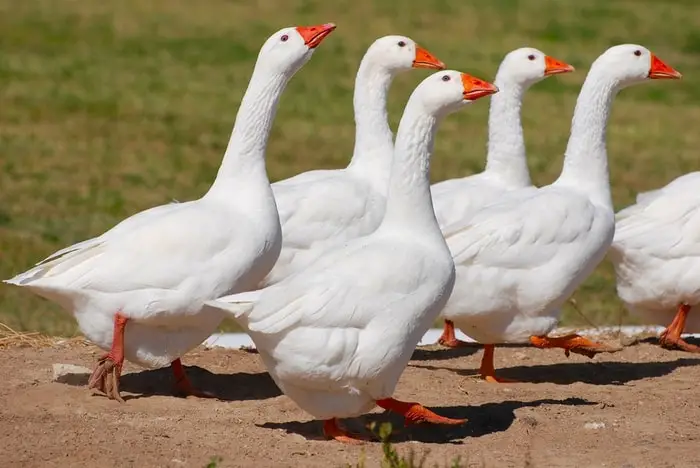
3. African Goose
African Goose originated in Africa, and they can be differentiated from the Chinese by their stocky bodies and thick necks. They have a large and long body, and large and strong wings and tails are widely spread. It has wide, deep, and large and heavy and soft wattles, large bills which are vital at its base, and big eyes. The body weight varies from 10 to 12.7 kg in gander and 8.2 to 10.9 kg in Goose.
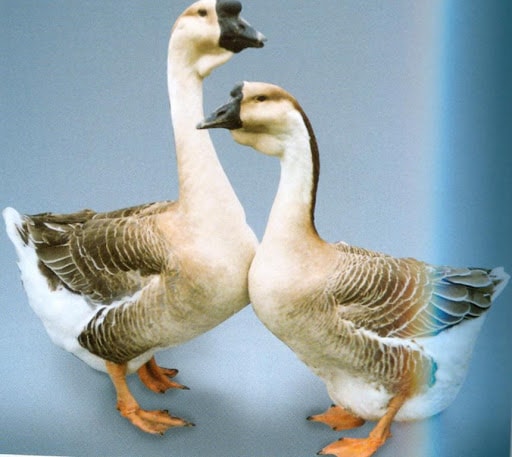
4. Sebastopol Goose
The Sebastopol geese were originally from the River Danube near the Black sea and called the Danubian goose. The color varieties include: Buff, White, Grey, Saddle Backed color. They are used for showing as they are quite attractive unusual pets. The body weight varies from 5.7 to 7.0 kg in gander and 4.5 to 6 kg in Goose. Females lay 30 to 50 eggs per year.
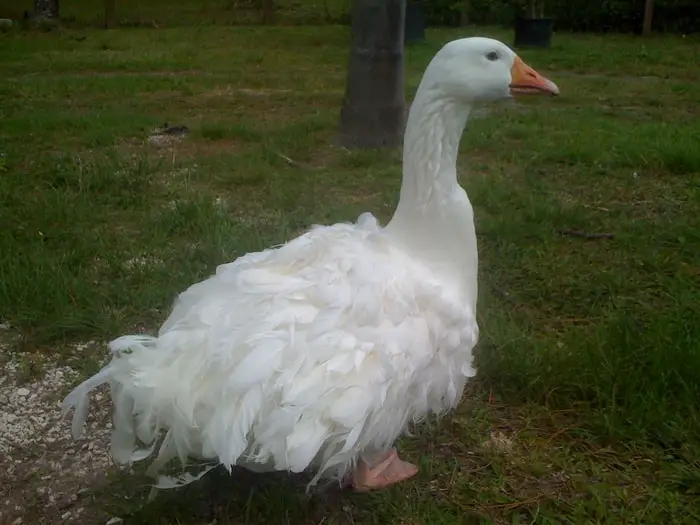
5. Types of Goose: Pilgrim Goose
It originated in North America, while it was developed in Missouri sometime in the 1930s by a renowned waterfowl breeder named Oscar Grow. Adult ganders are mostly white with some gray on the rump and occasionally with gray traces on other parts of their bodies. Adults’ geese are mostly gray and occasionally have traces of gray in their faces. This is a fast-growing breed, and the bodyweight varies from 6.3 to 8.2 kg in gander and 5.4 to 7.3 in Goose.
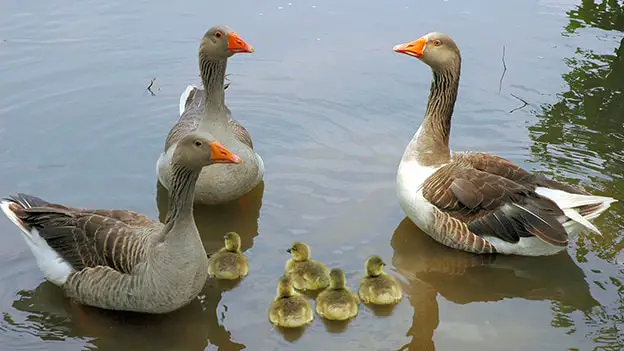
6. Types of Goose: American Buff
The American Buff geese can USA origin and were developed from Pomeranian stock. It is considered a dual-purpose goose, providing both meat and egg. It is a larger breed, with males weighing 8.16 kg and females reaching 7.26 kg. They have apricot-fawn color plumage, orange feet, and bill. Buff goose lays 15 to 25 white color eggs, and the geese are good broody.
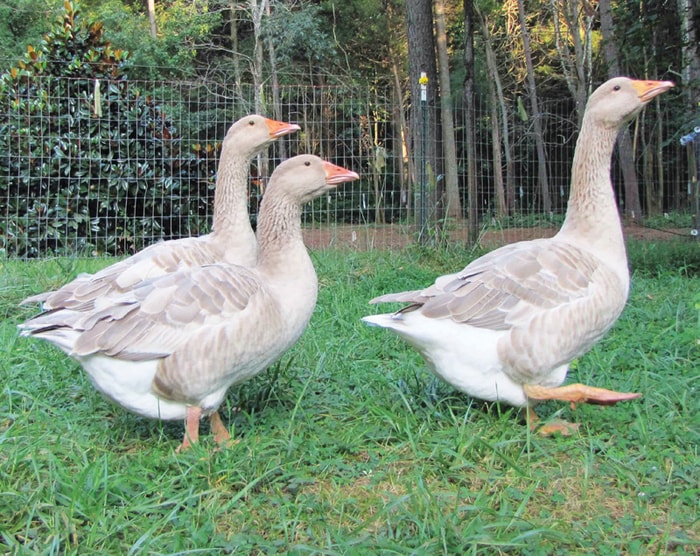
7. Pomeranian Goose
The Pomeranian geese were traditionally bred to have a large amount of breast meat. The feather colors are usually grey, mottled grey, white and pied buff. They have a single lobed paunch. The body weight varies in gander 8.2 to 10.9 kg and 7.3 to 9.1 kg in Goose. Pomeranian females lay 35 to 70 white color eggs depending on the strain.
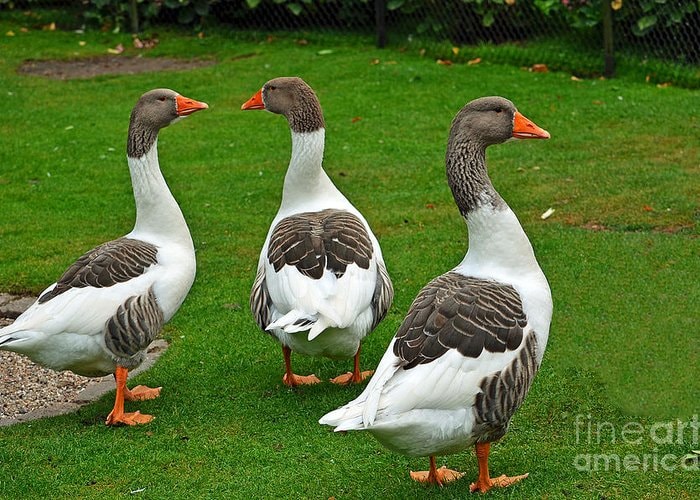
8. Chinese Goose
The Chinese Goose is a type of domesticated Goose descended from the wild Swan goose, and they come in two color varieties, gray and white. They are known as Hockerganse in Germany and Oies de China in France. This breed is reared for eggs and meat and also acts as a good ‘guard dog.’ Adult ganders of both varieties weigh between 4.5 to 5.5 kg, and goose hen weighs 3.5 to 4.5 kg.
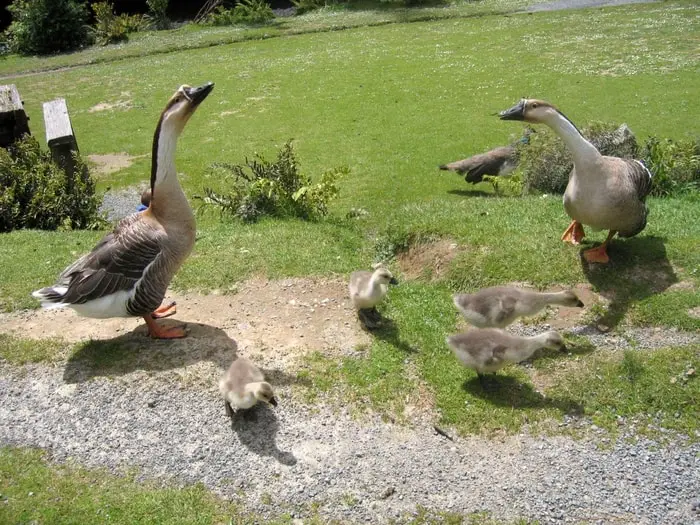
9. Types of Goose: Tufted Roman
The Roman Tufted goose is a small ornamental breed, and its development can be dated back to over 2000 years ago in the Danube River Valley, Germany. They are active, alert, beautiful, and have a horizontal stance. The bird has a strong, deep, wide-body, long wings, large and robust, and compact tail. The weight of old gander is about 5.5 kg and old goose 4.50 kg, whereas young gander 4.50 kg and young geese 4.0 kg. They have blue eyes, red-orange legs, a pinkish bill with white tips.
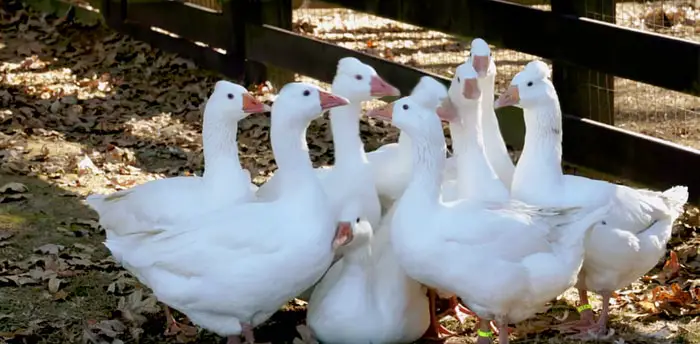
10. Canada Goose
The Canada goose is a wild goose, and they are native to arctic and temperate regions of North America and breeds of Canada, having a black head and neck, white patches on the face, and a brownish-gray body. This bird is 76 to 110 cm long with a 127 to 180 cm wingspan. The male usually weighs 3.2 to 6.5 kg and can be very aggressive in defending territory. These geese have a loud ‘honk honk call that can be raucous when many birds do it at once.

11. Egyptian Goose
Egyptian Goose is locally abundant on the African continent in the Nile Valley and South of the Sahara. They are attractive but rather odd-looking birds and have also been introduced in Great Britain, the Netherlands, and elsewhere. The birds have a pale head and under-parts, with dark eye patches and pink legs. They are usually 63 to 73 cm long. Egyptian geese eat seeds, leaves, grasses, and plant stems.
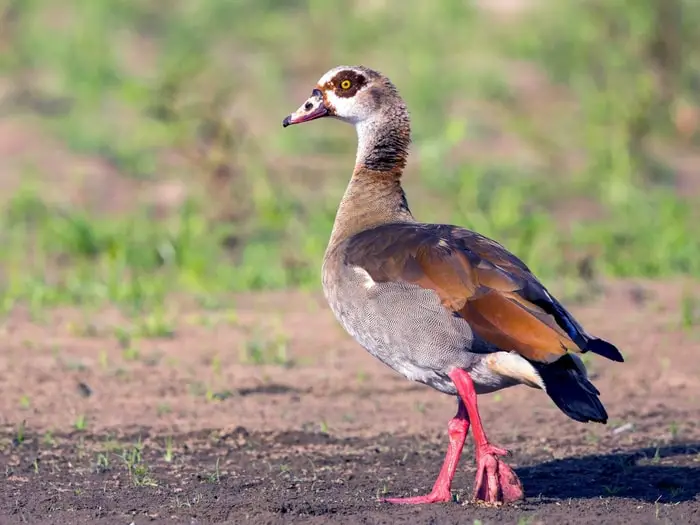
12. Czechoslovakian White Goose
The breed is also called the Bohemian Goose, and they are just small white geese originating in the Czech lands. The average weight of the male is 5.5-6.6 kg and the females 3.5-5.6 kg. The plumage is white and crested, and their legs and beaks are orange in color. The Goose is an excellent mother, and they will lay between 10-20 large white eggs per year.
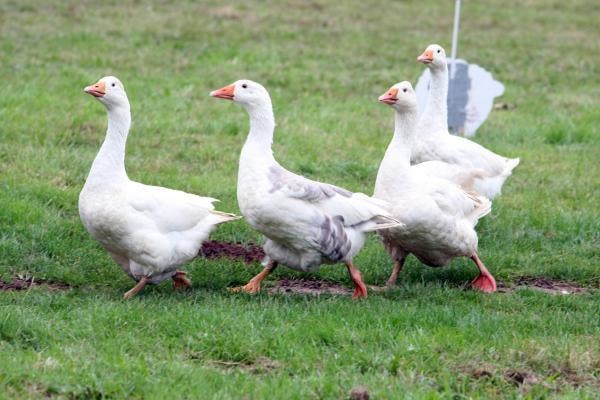
13. Huoyan Goose
The Human Goose originated from Changtu country in Liaoning province of China. They are lighter body weight and have orange shanks and orange beaks. The birds have a considerable variation in feather color. The males’ adult body weight ranges from 4.0-4.5 kg and the females from 3.0-3,5 kg. The breed is excellent for its ability to make good use of rough fodder and its resistance to cold.
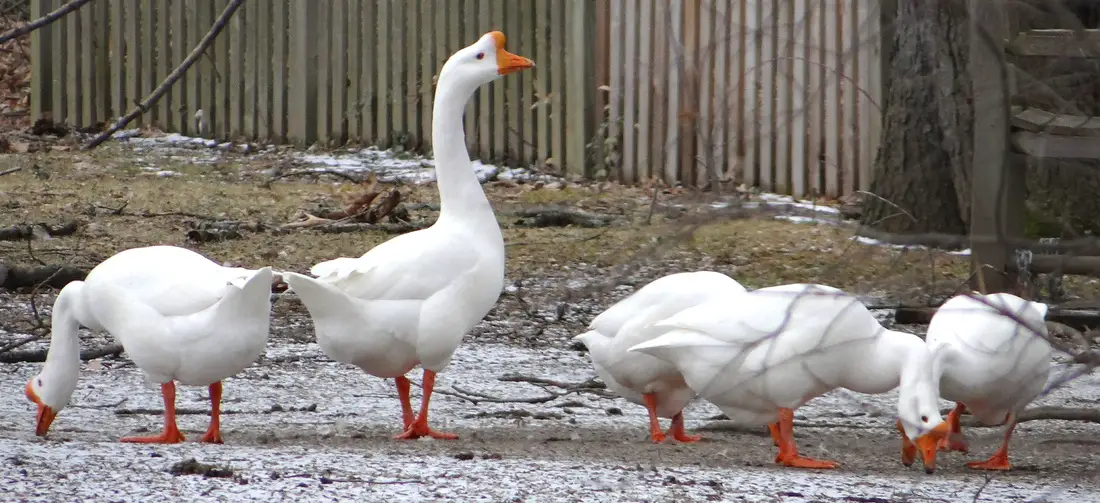
14. Kuban Goose
Kuban geese are gregarious, curious, and active with friendliness and sociability. The geese were first introduced in Kuban Agricultural Institute. Most often, there are gray or brown representatives, less often- white. They have large heads with a prominent bump above the beak. The tail is short, small, raised, and the wings are relatively small to the body. The body weight of the adult male is 5 Kg and 4.8 kg for the female.
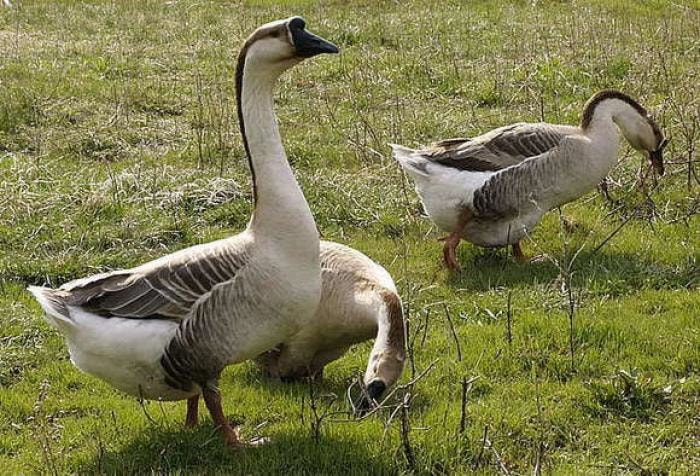
15. Landes Goose
Landes goose originated from the country in France. They are medium-weight, fast-growing Goose with a friendly temperament. Their body is large with a standout double underbelly. The average weights are regarded as being 6.5 to 7.3 kg for a gander and 5.5 to 6.3 kg for a goose. Both males and females birds are grey, and their shanks and beaks are orange to yellow.
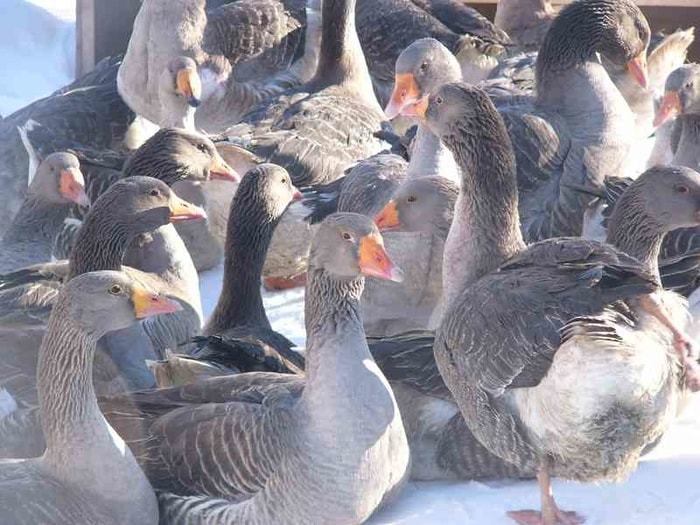
The Final Talk on Types of Goose
Goose is one of the most popular domestic waterfowl throughout the world. They are larger than a duck but smaller than the swans. They are reared mostly for meat purposes. Many varieties are kept for pet birds, show birds, and also for religious myths. In my article, I have listed the most common goose breeds for you. I think you will be benefitted from this article.